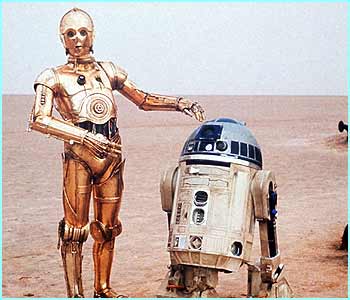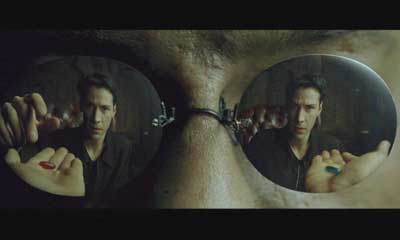A Brief History of Science Fiction Film Music
References, Links, and Works Cited
Created by Jessica Rooney
Last updated 5/1/06


The Matrix (1999)
Overview
The Matrix (1999) is a film that relies more upon sonic technology than music to make the film believable for the audience. In the film, sound effects and non-lyrical music are heavily used to create audience emotion and direct attention, with very little melodic music used in the score at all. Any music that is evident coincides with actions, unable to stand on its own. For example, in the opening scenes of The Matrix, the music builds into a chase sequence that could develop independent of the action, but it stops abruptly with the action to signify the unexpected, suspenseful, and dangerous. In this instance, the music accompanying Trinity’s flight across the roof-tops is suddenly stopped when the Agent leaps across the roof, helping the audience understand that they should be worried despite Trinity’s seemingly unstoppable fighting. The sound effects in The Matrix are so well developed that the film received an Oscar in Sound Effects Editing and Sound and a BAFTA (British Academy of Film and Television Award) for Best Sound (“The Matrix: Music from the Motion Picture”).

Ability of Sound and Music to Pull Audience Into the World of The Matrix
Distinguishing the Worlds of The Matrix with Music
Use of Sound Effects in The Matrix